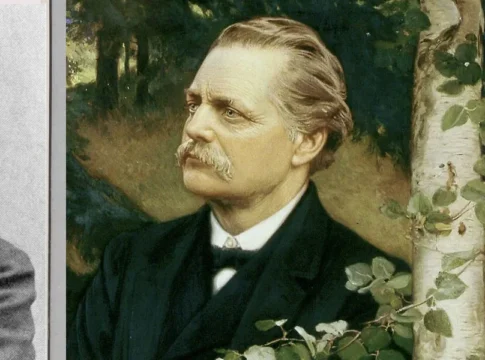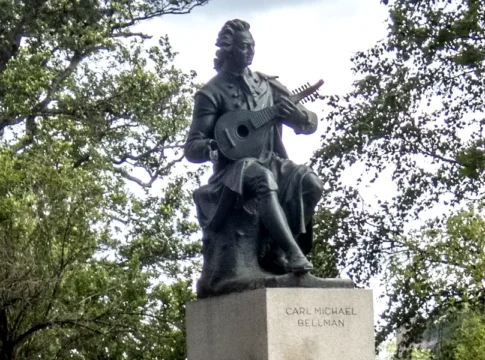 Photo: Picryl (photomontage, Public domain)
Photo: Picryl (photomontage, Public domain)
Astrid Lindgren in Stockholm: Sweden’s Iconic Children’s Author
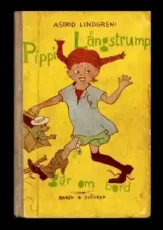
Pippi Goes on Board (1946). Photo: ‘abebooks.co.uk’ (fair use)
Astrid Lindgren, the legendary Swedish author, created characters who became global cultural icons—Pippi Longstocking, Emil of Lönneberga, and The Brothers Lionheart among them. While her books enchanted millions, Stockholm was the city where her stories came to life. Today, visitors can follow in her footsteps across the capital.
The life of Astrid Lindgren
Astrid Anna Emilia Lindgren was born in 1907 in Näs near Vimmerby, Småland. Her carefree childhood on a farm inspired the rural settings and values at the heart of her stories.
At 18, she moved to Stockholm, working as a secretary while shaping the imagination that would later make her famous. Here she met her husband Sture Lindgren, began writing, and turned everyday observations into timeless tales.




From secretary to storyteller: Her literary breakthrough
Lindgren’s first recognition came in 1944 with The Confidences of Britt-Marie. But her true breakthrough was Pippi Långstrump (Pippi Longstocking), created in 1945 for her daughter Karin. Pippi’s fearless independence captured a postwar generation longing for freedom and joy.
Her beloved works include:
- Bill Bergson, Master Detective (Mästerdetektiven Blomkvist, 1946)
- Mio, My Son (Mio min Mio, 1954)
- Madicken / Mardie (1960)
- Emil Gets Into Mischief (Emil i Lönneberga, 1966)
- The Brothers Lionheart (Bröderna Lejonhjärta, 1973)
- Ronia, the Robber’s Daughter (Ronja Rövardotter, 1981)
Astrid Lindgren’s Stockholm Trail
Stockholm preserves many places connected to Lindgren’s daily life and creative spark. Together they form a walkable journey for fans.
(1) Dalagatan 46 – Her Home and Creative Haven
From 1941 until her death in 2002, Lindgren lived at Dalagatan 46 in Vasastan. The four-room apartment, now a museum, is preserved exactly as she left it—complete with her writing desk and Karin’s bed, where Pippi Longstocking was born.
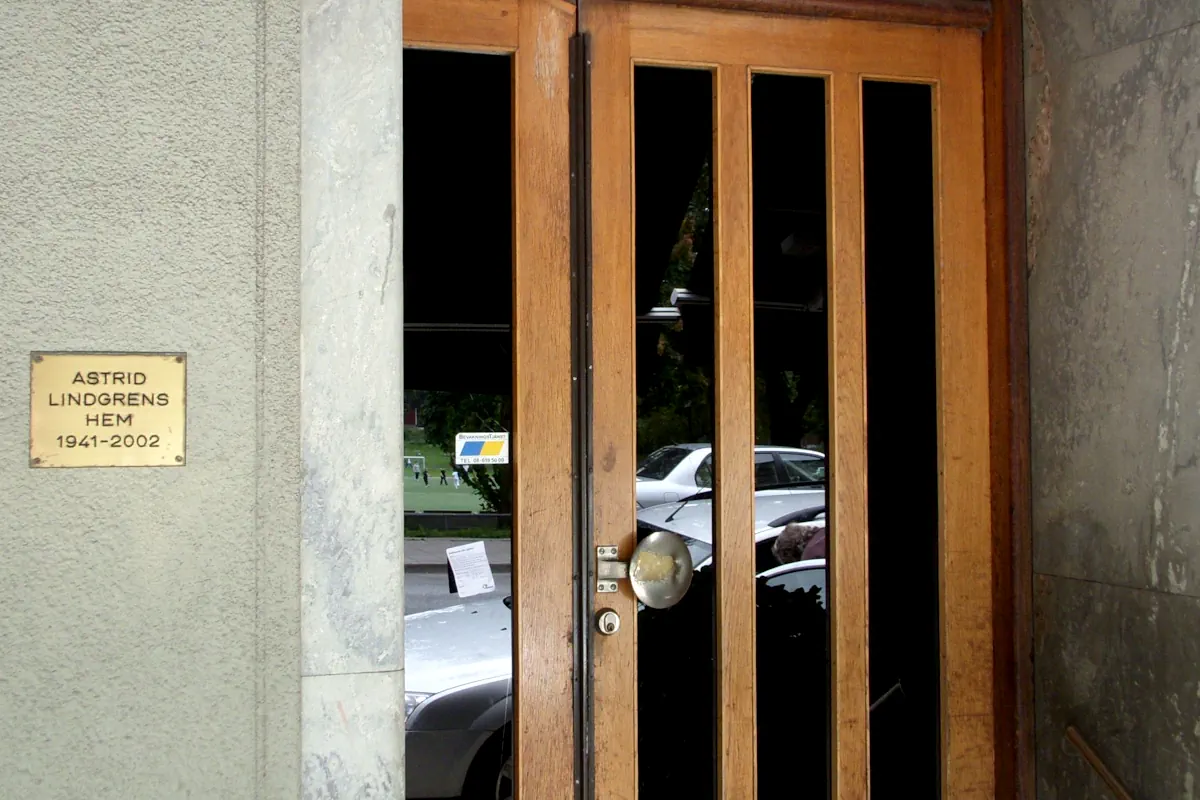
Astrid Lindgren’s home at Dalagatan 46. Photo: Holger Ellgaard (CC BY-SA 3.0)
(2) Vasaparken – Daily walks and storytelling inspiration
Just across the street, Vasaparken was part of her daily routine. In 1944, while recovering from a sprained foot, she wrote the first Pippi stories here. After her passing, a terrace was renamed in her honor.
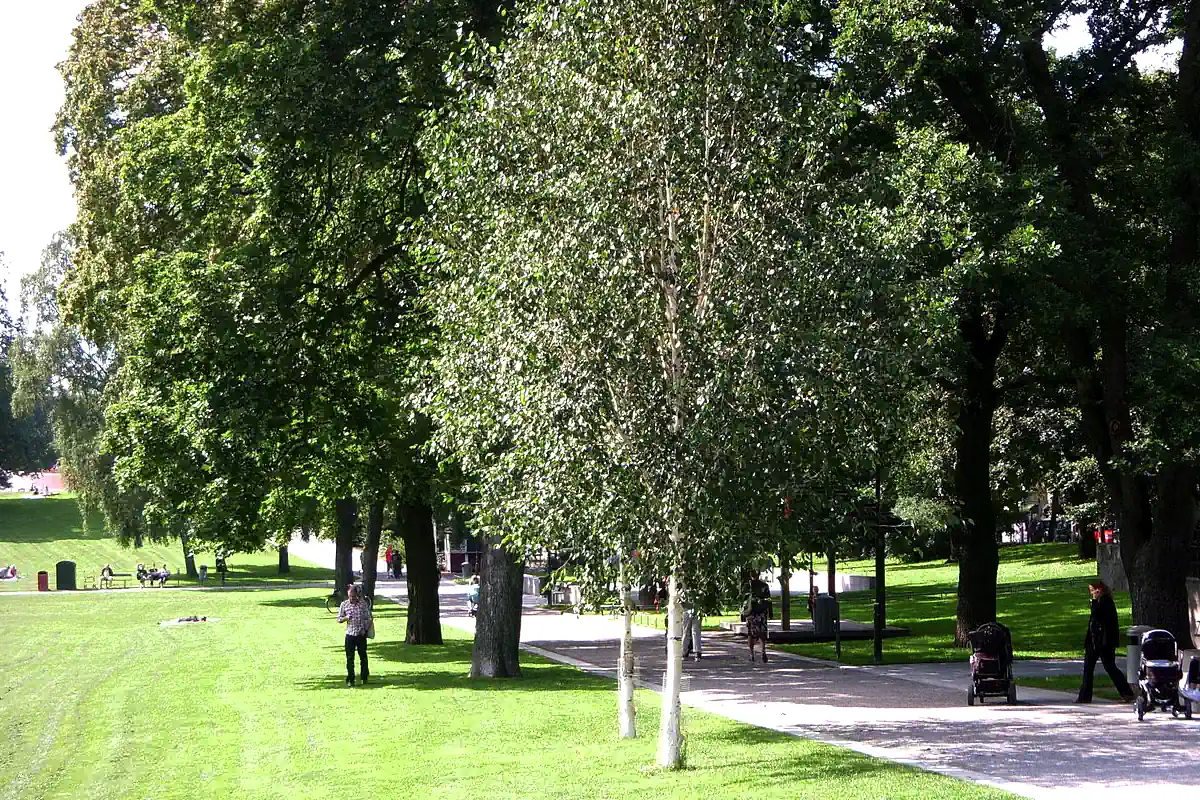
Vasaparken in Stockholm. Photo: Holger Ellgaard (CC BY-SA 3.0)
(3) Tegnérlunden—Where “Mio, My Son” began
Tegnérlunden was part of her walk to her publisher. Seeing a boy alone on a bench here inspired the opening lines of Mio, My Son. In 1996, a bronze statue of Lindgren was placed in the park.
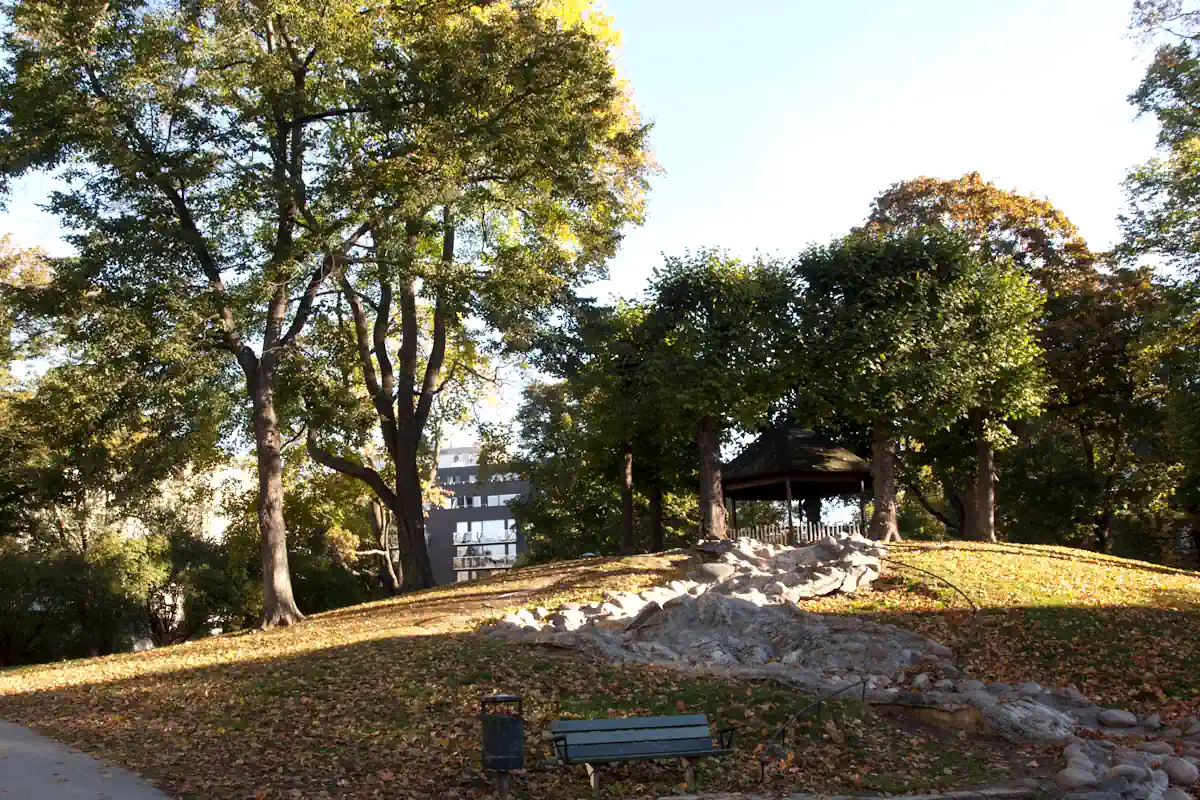
Tegnérlunden Park. Photo: I99pema (CC BY-SA 3.0)
Lindgren’s wider legacy
Beyond her stories, Astrid Lindgren was a tireless advocate for:
- Children’s rights and education
- Animal welfare—her activism helped pass a 1988 law on farming practices
- Global literacy—her books have been translated into more than 100 languages
Families can also explore Junibacken, a beloved children’s cultural center on Djurgården that brings her worlds vividly to life.
Conclusion: Walking through a living story
Stockholm is not just a backdrop for Astrid Lindgren’s life—it is part of her narrative. Stroll through Vasaparken or Tegnérlunden, visit her preserved home, or explore Junibacken, and you’ll find that her legacy remains alive in the city: a world where imagination, courage, and childhood joy still flourish.
Visit Info
![]() Astrid Lindgren
Astrid Lindgren
![]() Astrid Lindgren
Astrid Lindgren

